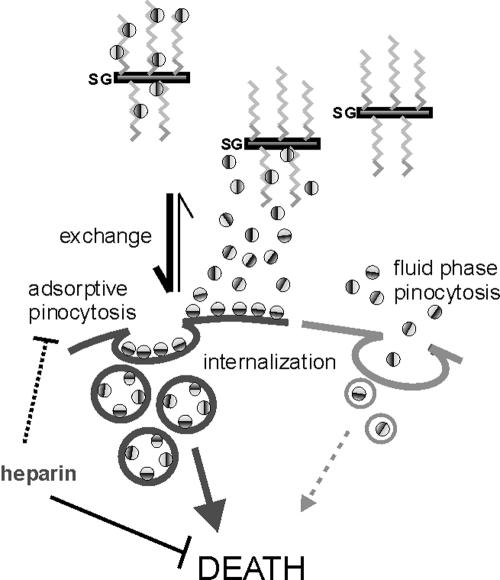FIG. 9.
The exchange/adsorption model. Granzyme (indicated by two-tone sphere) is delivered into the synapse electrostatically bound to the CS chains (zigzag lines) of serglycin (SG). Granzyme exchanges from CS chains to more negatively charged components of the target cell surface and is internalized by adsorptive pinocytosis (7). Mutation of cs1 or cs2 compromises the cationic surface (indicated by darker hemisphere) of granzyme B and reduces adsorption. Nonadsorbed wt or mutant granzyme is internalized by fluid-phase pinocytosis. Perforin (not shown) releases granzyme from either pathway to cause cell death. Pretreatment of granzyme with excess heparin substantially reduces adsorption but not fluid-phase uptake and prevents death by interfering with an additional unidentified step(s) common to both pathways. Aspects of this model are consistent with recent studies showing that SG-GrB complexes are not internalized (37) and inhibition of granzyme uptake by anionic competitors (41).

